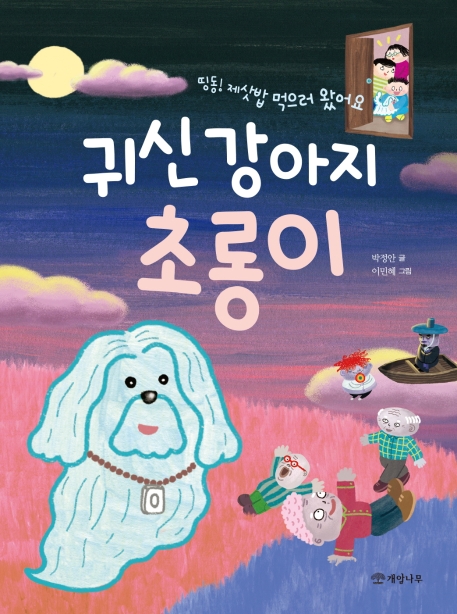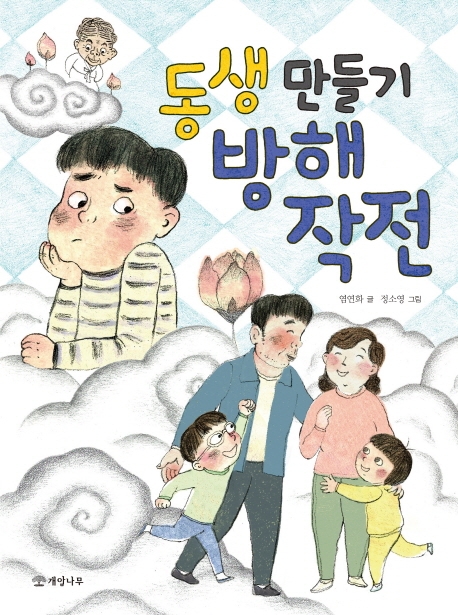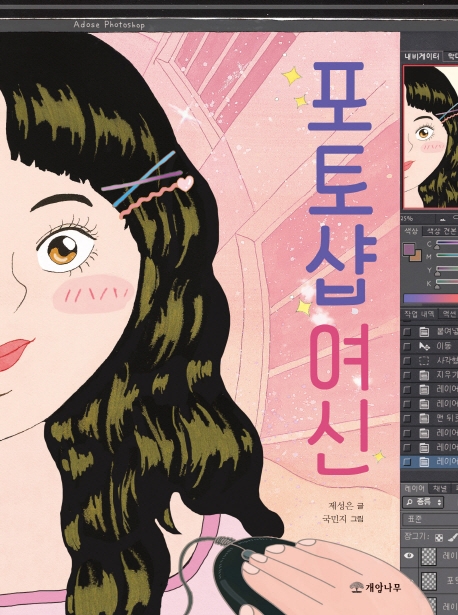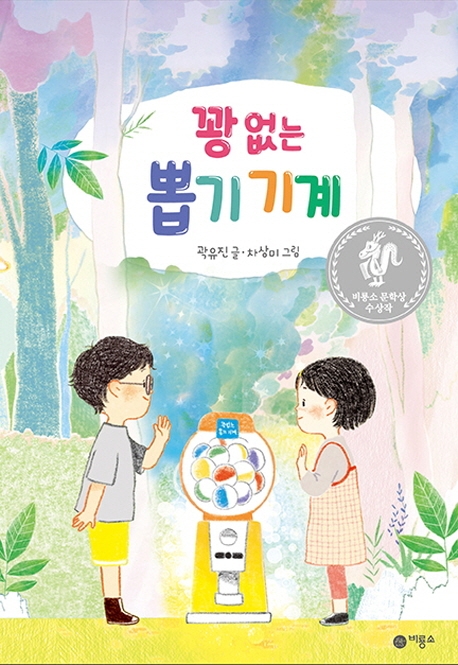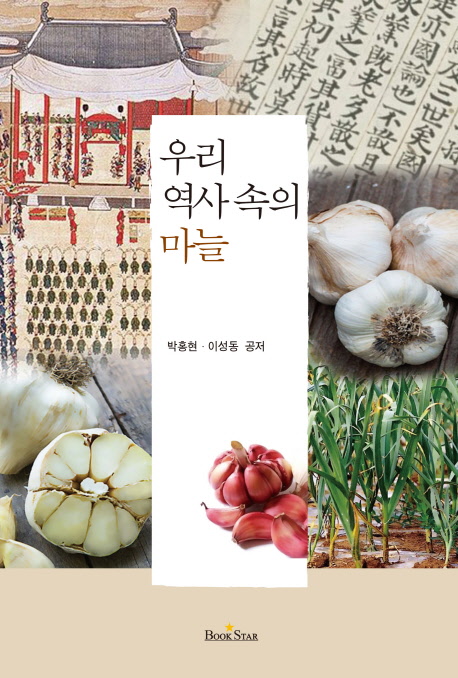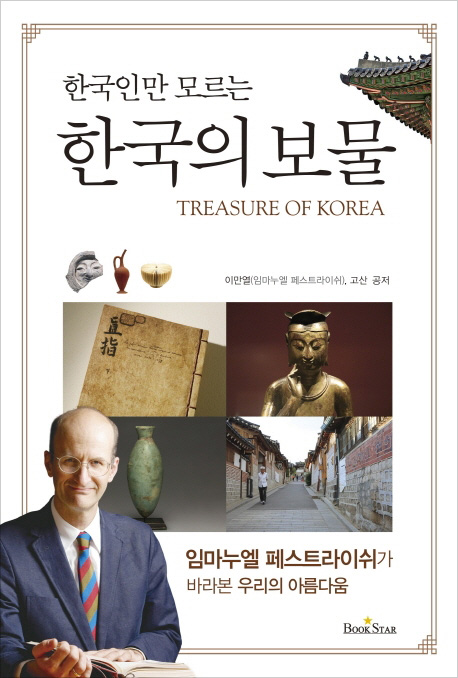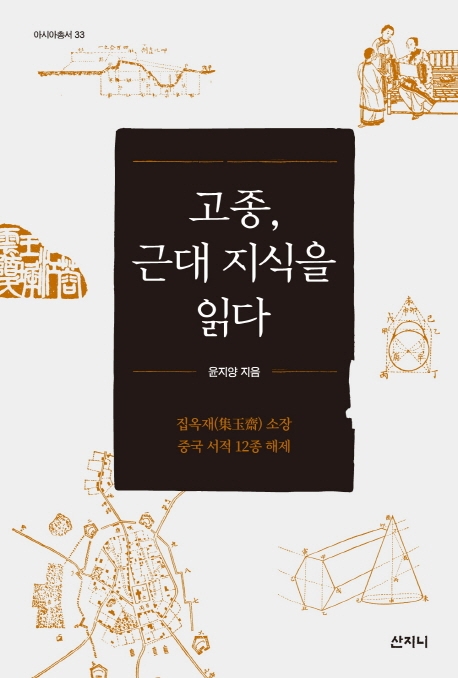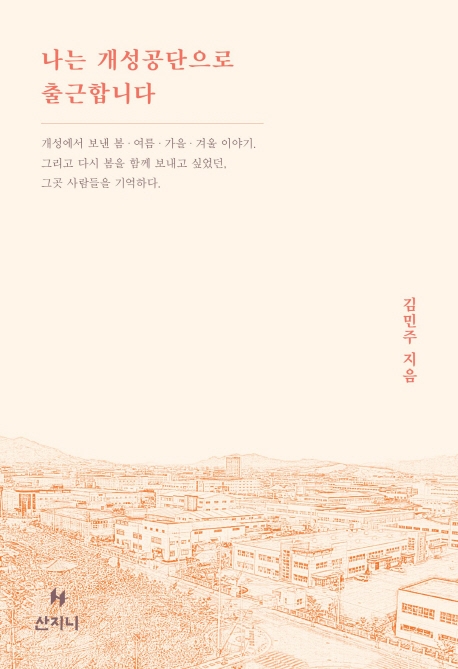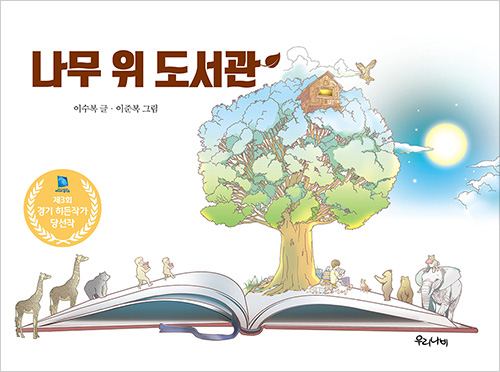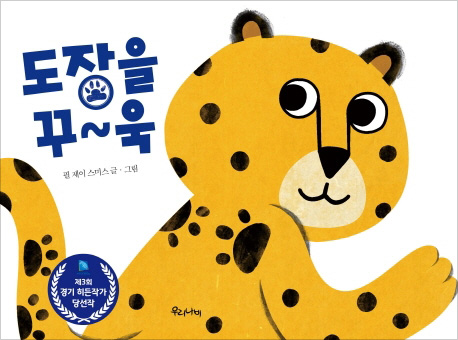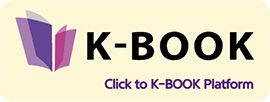|
Export Prospects of Korean Books KPIPA’s Choice for Supporting Abstract · Sample Translation
2020.05.04
The Ghost Puppy's Adventures
1. Publication Details
Imprint | GAEAMNAMU
2. Contact
Name | Jo Wonson
3. Marketing Information
Keyword | Family love; ghost; companion animal; sacrificial ceremony
4. About the Author and Illustrator
Author - Park Jeongan
5. About the Book The Ghost Puppy's Adventures is a story about all the hustle and bustle that ensues when Chorong the ghost puppy comes back to life a year after his death to reunite with his human family. Chorong, who had lived with Yongjae for several years, remembers Yongjae having told him not to forget him after he dies and to come home on the anniversary of his death. The day Chorong arrives back in this world to meet his family also happens to be the ritual day of Yongjae's grandfather. Yongjae's grandfather does not welcome Chorong because he thinks a dog cannot be recognized as a family member. However, after he expels evil spirits with the help of Chorong, Yongjae's grandfather eventually accepts Chorong as part of the family. In this book, our present world and the afterlife, along with unforgettable characters including an angel of death and evel spirits, will intrigue readers. Like Coco, the well-known animated film, this story will impress readers with its theme of love through the passing of family members.
Not Another Brother!
1. Publication Details
Imprint | GAEAMNAMU
2. Contact
Name | Jo Wonson
3. Marketing Information
Keyword | Family love; adoption; growth; family with many children
4. About the Author and Illustrator
Author - Yeom Yeonhwa
5. About the Book Not Another Brother! is the story of a boy who is desperate to do anything to avoid getting another sibling-who would be his third younger brother and the fifth boy in his family. Taeyun feels unhappy and stressed because he cannot play as much as he want to look after his younger siblings. Tired of cleaning up after his younger brothers, he starts sabotaging his parent's love. Taeyun sets a table for Samshin, the goddess of childbirth, and meets her in his dreams and pleads with her not to give his partents a new baby. After awhile, his mom has a miscarriage, and Taeyun regrets his behavior, and along with other family members, tries to console his mom. Observing Taeyun's growth reminds readers of the love for family. Moreover, as there are many only children nowadays, this book helps readers indirectly experience conflicts among siblings and problems that families must face together. The author hopes that the tireless daily lives of Taeyun's family will give readers a chance to reflect on the meaning of family and reaffirm their family's love.
Photoshop Goddess
1. Publication Details
Imprint | Gaeamnamu
2. Contact
Name | Jo Wonson
3. Marketing Information
Keyword | Lookism; k-pop; F class; growth
4. About the Author and Illustrator
Author - Je Sungeun
5. About the Book Jian, the protagonist of Photoshop Goddess, wants to be an idol star. She dreams of becoming a singer who is internationally famous like a K-Pop celebrity. However, her "ugly" look is an obstacle against realizing her dream. Not only her male classmates, but her own mother hurts her feelings by criticizing her appearance. Jian herself has always felt daunted by her looks. As a present, one day Jian's friend Hyerim, who happens to be good at Photoshop, gives Jian a picture where Jian has been beautifully transformed through Photoshop. Thanks to this photo, Jian gets the chance to participate in an audition. However, the rouse is up and she doesn't pass the audition. Despite the result, Jian doesn't give up, and with the support and solidarity of Hyerim, learns to grow up. In this story, you can see a regular girl challenge the world and break through to realize her dreams. Young readers will find the courage and hope they need to make their dreams come true.
The No-Lose Toy Egg Vending Machine
1. Publication Details
Imprint | BIR Publishing Co., Ltd.
2. Contact
Name | Claire Yang
3. Marketing Information
Keyword | Fantasy; Restoring a Relationship
4. About the Author and Illustrator
Author - Gwak Yujin
5. About the Book
The warmth, comfort, and magical fantasy that a toy egg vending machine offers
Garlic in History
1. Publication Details
Imprint | KwangMoonKag Publishing Co.
2. Contact
Name | JUNG Hakyung
3. Marketing Information
Keyword | Health; longevity; food
4. About the Author
PARK Hong-hyun (Doctor of natural sciences, Dankook University)
5. About the Book
Garlic has a unique history of being both revered and reviled. On the one hand, it is an ancient ingredient that prevented disease, cured illness, and increased vitality. People ate garlic on a daily basis at the pyramid construction sites in ancient Egypt, and the troops of Alexander the Great were provided with garlic to maintain their tireless energy. However, other civilizations despised garlic due to its strong odor. In Buddhist culture, it was absolutely prohibited. Confucian culture dismissed it as an unclean food. Yet, despite the fact that many people detested its smell, there must have been real benefits for garlic to be loved by others.
Treasure of Korea
1. Publication Details
Imprint | KwangMoonKag Publishing co.
2. Contact
Name | JUNG Hakyung
3. Marketing Information
Keyword | Korea; hallyu, Korean Wave; Treasure
4. About the Author
Emanuel Pastreich (Lee Man-yeol)
5. About the Book
The culture of mingling is prevalent in the city plan of Seoul. The Palace of Versailles clearly shows the difference between a city planned around the king as the center and a city of togetherness with people. The king’s power in France strongly influenced the environment of the city. The French city of the king had to shine with dignity. Seoul, however, does not display the Korean king’s absolute power through external pomp. Whenever I show photos of Seoul around 1900, most students feel embarrassed. Seoul looks too insignificant compared to the Paris of the time, with its townhouses lining the broad boulevards. I cannot agree with my students’ response. In the 1860s, Paris went through a massive urban renewal.
King Gojong on Modern Knowledge
1. Publication Details
Imprint | SANZINI
2. Contact
Name | Kang Sugeul
3. Marketing Information
Keyword | Gojong; book; Joseon Dynasty; China
4. About the Author After studying Chinese literature at Seoul National University, the author received a doctorate at Seoul National University for his research into the reception of the Chinese epic play The Western Chamber in Korea. For four years, he participated in the work to interpret ancient Chinese texts kept in the Kyujanggak archives, and is currently involved in researching the East Asian reception of ancient Chinese content from ancient times to the present. His research topics include the contemporary interpretation of classics and their use in educational settings. As of 2020, he is currently working as a senior research fellow at the SNU Institute of Humanities while also teaching at SNU and the University of Seoul.
5. About the Book
Known as the royal who reigned during the kingdom’s tragic demise, King Gojong of Korea was subjected to negative criticism until the 1990s. When the Korean Empire, which the King himself built, lost its sovereignty to Japan and was preyed upon by major powers, Gojong became branded as an incompetent leader who was unfit to respond to a national crisis. Recently, however, scholars have begun seeing Gojong in a new light, as a leader who was instrumental in bringing Western science and technology to Korea and who leveraged this knowledge to transform Korea into a more autonomous modern nation.
I Work at the Kaesong Industrial Complex
1. Publication Details
Imprint | SANZINI
2. Contact
Name | Kang Sugeul
3. Marketing Information
Keyword | Kaesong Industrial Complex; division; Korean Peninsula; unification; North Korea
4. About the Author
Based on her experience working for the Department of Social and Cultural Affairs of the Ministry of Unification and the United Nations World Food Programme, Kang Sugeul wrote her thesis on the malnutrition of North Koreans who grew up during the North Korean famine or the Arduous March. After seeing a job posting for a nutritionist at the Kaesong Industrial Complex, she crossed the Armistice Line and headed for North Korea the same month she earned her master’s degree.
5. About the Book
Have you ever imagined crossing the armistice line to commute to North Korea? Will a day come when South Korean students set to graduate from college will prepare for employment in the North? Having North Koreans for work colleagues, something only imaginable in novels, was possible at the Kaesong Industrial Complex which was part of the inter-Korean economic cooperation project. I Work at the Kaesong Industrial Complex contains stories of North Korea and its people whom the author met while working as a nutritionist at the Kaesong Industrial Complex for a year before it closed in 2016.
Library in the Tree
1. Publication Details
Imprint | Woorinabi Publishing Co.
2. Contact
Name | Rosa Han
3. Marketing Information
Keyword | Library; reading; adventure; nature; storytelling
4. About the Author and Illustrator
Author - Lee Su-bok
5. About the Book A boy leaves the city where people don’t read books anymore, and he heads to the forest. Unlike the dreary city, the forest is quiet and refreshingly green, the best place for reading. When the boy starts reading, a monkey in a tree becomes curious and wants to know what the boy is doing. The monkey learns that the boy’s bag isn’t filled with cookies or fruit but with books. The boy and the monkey go on a fun adventure by reading the boy’s books, and the monkey realizes the world is bigger than he had thought and that there are exciting things happening everywhere. Soon, other animals join the boy and the monkey’s book adventure. It becomes crowded with many animals joining them. Realizing how fun reading is, the animals decide to bring books from the city to the forest. This is not hard to do because the people in the city no longer care for books, preferring other ways to get information. The boy continues to read for the forest animals to their delight. One day, it suddenly starts to rain, and the books are in danger of getting all wet. Fortunately, the animals move all the books to the bear’s cave, which becomes packed with books, leaving no place for the bear. The boy says, “It’d be so nice if there was a library in the forest.” Hearing that, the forest animals decide to build a library. After the boy returns to the city, the animals decide to build a library on top of the zelkova tree in the forest and fill the library with the books. The library is built with only the materials from the forest, but it looks amazing. However, the boy no longer visits the forest. Unable to see the boy anymore, the forest animals decide to embark on an adventure by themselves. With the adventures they have had by reading books, they feel ready to go out in the world and have some fun. They then come back and write a book about their adventures. Years pass, and the boy heads to the forest again. He had been sick in the hospital, which was why he couldn’t visit the forest. Once he arrives at the forest, he sees a small house filled with books, the library in the tree with the books about the adventures that the forest animals had had. Library in the Tree tells the adventures that a boy and his animal friends have by reading books and how they embark on their own journey after being inspired by reading. By contrasting the city people, who spend all their time watching videos, with the forest animals, who enjoy reading, the book prompts readers to think about their own reading habits. It is also fun to read about the forest animals building a library without cement or bricks but only with what they can find in the forest. The book teaches young readers to have the courage to go out into the world and embark on a journey and also about having faith in oneself despite failures. The book will move the hearts of young readers and also inspire them to take action towards their goal.
Stamp-Stamp
1. Publication Details
Imprint | Woorinabi Publishing Co.
2. Contact
Name | Rosa Han
3. Marketing Information
Keyword | Identity; friendship, relationship, growing up; confidence; adventure; cooperation
4. About the Author Phil Jay Smith is a comic book editor who loves illustration books. He had written short and sweet stories to tell his ill friend so that he could forget about his illness, and now one of those stories is this illustration book. Stamp-Stamp, Smith’s first book, will make readers wait impatiently for his next story, for it is certain that it will be even more fun and heartwarming.
5. About the Book
He is a leopard cub. He has soft fur but no leopard spots. One day he sees a kitten up in a tree, too scared to come down. The leopard cub helps the kitten come down, and the kitten stamps his paws on him. Stamp-stamp. The leopard cub sees a lion crying over his messed-up mane. The leopard cub combs it so that it’s nice and pretty. The lion hugs the cub and stamps his paws on him. Stamp-stamp. The leopard cub sees a mole who is lost and confused. The cub helps him find his way home. The mole puts his stamp on him. Stamp-stamp. The cub sees an elephant crying because of his tied-up trunk. The leopard cub unties the elephant’s trunk. The elephant stamps him with his trunk. Stamp-stamp. The adorable cub comes back home. He realizes he now has handsome spots. A leopard cub was born without any spots. But there is nothing to worry about. Every day he earns spots on his coat. Every time he helps other animals in need, he gets spots, the spots the other animals stamp on his coat to express their gratitude.
|
Pre Megazine
-

Projects Supported by the KPIPA in the First Half of 2024
VOL.69
2024.04 -

Philosophy Changes Weather
VOL.69
2024.04 -

2nd Week, March 2024
VOL.69
2024.04 -

#Sky
VOL.69
2024.04 -

Agency list
VOL.69
2024.04 -

Surrender, Earth Creatures
VOL.68
2024.03 -

3rd Week, February 2024
VOL.68
2024.03 -

#School
VOL.68
2024.03 -

Killer-content Exhibition at the 2024 Bologna Children’s Book Fair
VOL.68
2024.03 -

Agency list
VOL.68
2024.03 -

Paik’s Korean Liquor
VOL.67
2024.02 -

4th Week, January 2024
VOL.67
2024.02 -

Minjeong Jeong
VOL.67
2024.02 -

#Start
VOL.67
2024.02 -

Agency list
VOL.67
2024.02 -

Hyeon Jeong Lee
VOL.66
2024.01 -

Agency list
VOL.66
2024.01 -

We Won’t Leave the Earth
VOL.66
2024.01 -

#Winter
VOL.66
2024.01 -

1st Week, December 2023
VOL.66
2024.01 -

My Time Does Not Flow Like Yours
VOL.65
2023.12 -

2nd Week, November 2023
VOL.65
2023.12 -

Konishi Naoko
VOL.65
2023.12 -

#Flower
VOL.65
2023.12 -

Wrap-up Summary of the 2023 Sharjah International Book Fair: Korean Pavilion
VOL.65
2023.12 -

2023 Korea Picture Book Award
VOL.65
2023.12 -

Agency list
VOL.65
2023.12 -

The Only One
VOL.64
2023.11 -

2nd Week, October 2023
VOL.64
2023.11 -

Yoojin Lee
VOL.64
2023.11 -

#Book Fair
VOL.64
2023.11 -

Sharjah International Book Fair 2023: Korean Pavilion
VOL.64
2023.11 -

Agency list
VOL.64
2023.11 -

Things I Couldn’t Throw Away Again
VOL.63
2023.10 -

2nd Week, September 2023
VOL.63
2023.10 -

Li Xia
VOL.63
2023.10 -

#Autumn
VOL.63
2023.10 -

Agency list
VOL.63
2023.10 -

The Baobab and the Snail
VOL.62
2023.09 -

2nd Week, August 2023
VOL.62
2023.09 -

Kang Bang-Hwa
VOL.62
2023.09 -

2023 Visiting Korean Book Fair in Paris
VOL.62
2023.09 -

Agency list
VOL.62
2023.09 -

#Photograph
VOL.62
2023.09 -

The Sound of Summer
VOL.61
2023.08 -

3rd Week, July 2023
VOL.61
2023.08 -

Slin Jung
VOL.61
2023.08 -

#Food
VOL.61
2023.08 -

Agency list
VOL.61
2023.08 -

Brilliant Regards
VOL.60
2023.07 -

2nd Week, June 2023
VOL.60
2023.07 -

HOANG HAI VAN
VOL.60
2023.07 -

#Life
VOL.60
2023.07 -

Titles Selected for the Overseas Publication Grants 2023
VOL.60
2023.07 -

Agency list
VOL.60
2023.07 -

Together, and There Shall be the Path
VOL.59
2023.06 -

2nd Week, May 2023
VOL.59
2023.06 -

XIAO ZHUANG
VOL.59
2023.06 -

#Dream
VOL.59
2023.06 -

Agency list
VOL.59
2023.06 -

I’m in Tongyeong
VOL.58
2023.05 -

2nd Week, April 2023
VOL.58
2023.05 -

2023 Visiting Korean Book Fair in Tokyo
VOL.58
2023.05 -

Moon Chakage
VOL.58
2023.05 -

#Love
VOL.58
2023.05 -

Agency list
VOL.58
2023.05 -

UN HE PAIK
VOL.57
2023.04 -

Joseon Art Museum
VOL.57
2023.04 -

2nd Week, March 2023
VOL.57
2023.04 -

#SF
VOL.57
2023.04 -

2023 Overseas Publication Grants
VOL.57
2023.04 -

Agency list
VOL.57
2023.04 -

Books Sotheby’s Loved
VOL.56
2023.03 -

3rd Week, February 2023
VOL.56
2023.03 -

Lee Tae-Yeon
VOL.56
2023.03 -

#Companion Animal
VOL.56
2023.03 -

Agency list
VOL.56
2023.03 -

Agency list
VOL.55
2023.02 -

Always Smile
VOL.55
2023.02 -

3rd Week, January 2023
VOL.55
2023.02 -

Helen Cho
VOL.55
2023.02 -

#Travel in Korea
VOL.55
2023.02 -

Killer-content Exhibition at the 2023 Bologna Children’s Book Fair
VOL.55
2023.02 -

2023 Future Science Trends
VOL.54
2023.01 -

1st Week, December 2022
VOL.54
2023.01 -

Sandy Joosun Lee
VOL.54
2023.01 -

#2022 K-Book Copyright Market
VOL.54
2023.01 -

Agency list
VOL.54
2023.01 -

The Age of Daughters
VOL.53
2022.12 -

2nd Week, November 2022
VOL.53
2022.12 -

VO THI KHANH LAN
VOL.53
2022.12 -

#Mystery & Thriller
VOL.53
2022.12 -

Agency list
VOL.53
2022.12 -

You’re Light
VOL.52
2022.11 -

2nd Week, October 2022
VOL.52
2022.11 -

Kaparushkina Diana (Jang Diana)
VOL.52
2022.11 -

#Library
VOL.52
2022.11 -

2022 K-Book Copyright Market
VOL.52
2022.11 -

Agency list
VOL.52
2022.11 -

Eun Hye’s Hug
VOL.51
2022.10 -

2nd Week, September 2022
VOL.51
2022.10 -

Kong Yuan
VOL.51
2022.10 -

#Self-Esteem
VOL.51
2022.10 -

Agency list
VOL.51
2022.10 -

Tube
VOL.50
2022.09 -

2nd Week, August 2022
VOL.50
2022.09 -

Alyssa Kim
VOL.50
2022.09 -

#Environment & Climate Change
VOL.50
2022.09 -

Killer-Content Exhibition at the 2022 Göteborg Book Fair
VOL.50
2022.09 -

Agency list
VOL.50
2022.09 -

Post-Mobility
VOL.49
2022.08 -

2nd Week, July 2022
VOL.49
2022.08 -

Ji-Hyun PARK, CELESTIN
VOL.49
2022.08 -

#2022 Visiting Korean Book Fair - Indonesia
VOL.49
2022.08 -

Agency list
VOL.49
2022.08 -

Titles Selected for the Overseas Publication Grants 2022 (Results)
VOL.49
2022.08 -

2022 Visiting Korean Book Fair in Tokyo
VOL.48
2022.07 -

It’s Time to Say Goodbye
VOL.48
2022.07 -

1st Week, June 2022
VOL.48
2022.07 -

Park Kyeong-Hee
VOL.48
2022.07 -

#Friendship
VOL.48
2022.07 -

Agency list
VOL.48
2022.07 -

Agency list
VOL.47
2022.06 -

Today’s Jaram
VOL.47
2022.06 -

2nd Week, May 2022
VOL.47
2022.06 -

Mi Hyun Kim
VOL.47
2022.06 -

#Picture Books
VOL.47
2022.06 -

Words Without Heart
VOL.46
2022.05 -

2nd Week, April 2022
VOL.46
2022.05 -

Jin Jin-Joo
VOL.46
2022.05 -

#Science - Children’s Books
VOL.46
2022.05 -

Seoul International Book Fair 2022
VOL.46
2022.05 -

Agency list
VOL.46
2022.05 -

Queen of Words
VOL.45
2022.04 -

2nd Week, March 2022
VOL.45
2022.04 -

Gi Jang
VOL.45
2022.04 -

#K-Webtoon Fantasy
VOL.45
2022.04 -

South Korea the Guest of Honor at the 2022 Bogota International Book Fair (FILBO)
VOL.45
2022.04 -

Agency list
VOL.45
2022.04 -

Winners of the 2022 Bologna Ragazzi Award
VOL.44
2022.03 -

Metaverse Sapiens
VOL.44
2022.03 -

2nd Week, February 2022
VOL.44
2022.03 -

Bae Yang-Soo (裵凉秀)
VOL.44
2022.03 -

#K-Webtoon Slice of Life/Romance
VOL.44
2022.03 -

2021 Translation Grants for Publications (Results)
VOL.44
2022.03 -

Agency list
VOL.44
2022.03 -

Yeoni and Willow Bachelor
VOL.43
2022.02 -

3rd Week, January 2022
VOL.43
2022.02 -

Sungrye Han (한성례, 韓成禮)
VOL.43
2022.02 -

#K-Webtoon Drama
VOL.43
2022.02 -

2022 Visiting Korean Book Fair
VOL.43
2022.02 -

Agency list
VOL.43
2022.02 -

Agency list
VOL.42
2022.01 -

NINE
VOL.42
2022.01 -

1st Week, December 2021
VOL.42
2022.01 -

Amber Hyun Jung Kim
VOL.42
2022.01 -

#K-Drama
VOL.42
2022.01 -

2022 Overseas Publication Grants
VOL.42
2022.01 -

Agency list
VOL.41
2021.12 -

KPIPA joined the 2021 Guadalajara International Book Fair
VOL.41
2021.12 -

#Cooking
VOL.41
2021.12 -

Seung Joo-Yeoun
VOL.41
2021.12 -

09:47
VOL.41
2021.12 -

1st Week, November 2021
VOL.41
2021.12 -

Before Overtaxing Oneself
VOL.12
2019.06 -

South Korea's May Bestsellers
VOL.12
2019.06 -

Export Prospects of Korean Books
VOL.12
2019.06 -

Science Cookie
VOL.13
2019.07 -

South Korea's June Bestsellers
VOL.13
2019.07 -

Export Prospects of Korean Books
VOL.13
2019.07 -

The Story of Dolphin
VOL.14
2019.08 -

South Korean Bestsellers in July
VOL.14
2019.08 -

Export Prospects of Korean Books
VOL.14
2019.08 -

Export Prospects of Korean Books
VOL.15
2019.09 -

South Korean bestsellers in August
VOL.15
2019.09 -

Kakao Friends Essay Series
VOL.15
2019.09 -

Export Prospects of Korean Books
VOL.16
2019.10 -

South Korean bestsellers in September
VOL.16
2019.10 -

The Science of Conception
VOL.16
2019.10 -

Stranger Museum
VOL.40
2021.11 -

Agency list
VOL.40
2021.11 -

KPIPA Joins the 2021 China Shanghai International Children’s Book Fair (CCBF)
VOL.40
2021.11 -

#Poem
VOL.40
2021.11 -

Yoon Sunme
VOL.40
2021.11 -

2nd Week, October 2021
VOL.40
2021.11 -

Export Prospects of Korean Books
VOL.17
2019.11 -

South Korean bestsellers in October
VOL.17
2019.11 -

Bamboo Yoga
VOL.17
2019.11 -

Export Prospects of Korean Books
VOL.18
2019.12 -

South Korean bestsellers in November
VOL.18
2019.12 -

Fish in the water
VOL.18
2019.12 -

2019 South Korea-China Publishing Copyright Exchanges Event
VOL.18
2019.12 -

Export Prospects of Korean Books
VOL.19
2020.02 -

3rd Week, January 2020
VOL.19
2020.02 -

Elementary Science Q2 Please take care of the Earth
VOL.19
2020.02 -

Export Prospects of Korean Books
VOL.20
2020.03 -

3rd Week, February
VOL.20
2020.03 -

Social Impact
VOL.20
2020.03 -

Export Prospects of Korean Books
VOL.21
2020.04 -

2nd Week, March
VOL.21
2020.04 -

Plants for those who are suffering
VOL.21
2020.04 -

Agency list
VOL.39
2021.10 -

K-Book Promotion Event
VOL.39
2021.10 -

#Adolescent Literature
VOL.39
2021.10 -

WANG TSE YU
VOL.39
2021.10 -

2nd Week, September 2021
VOL.39
2021.10 -

The Sun Is Radiant, and Life Is Precious
VOL.39
2021.10 -

Agency list
VOL.38
2021.09 -

Announcement on 2021 K-Book Translation Contest
VOL.38
2021.09 -

#Preference & Hobby
VOL.38
2021.09 -

Oka Hiromi
VOL.38
2021.09 -

2nd Week, August 2021
VOL.38
2021.09 -

Summer
VOL.38
2021.09 -

Export Prospects of Korean Books
VOL.22
2020.05 -

2nd Week, April
VOL.22
2020.05 -

What is this line for?
VOL.22
2020.05 -

2020 Online Meetings with Indonesian Publishers
VOL.23
2020.06 -

#Science and Humanities
VOL.23
2020.06 -

3rd Week, May
VOL.23
2020.06 -

Alexandra Kim, la sibérienne
VOL.23
2020.06 -

#Environment
VOL.24
2020.07 -

3rd Week, June
VOL.24
2020.07 -

Three Generations of Railworkers
VOL.24
2020.07 -

Agency list
VOL.37
2021.08 -

I Play, Therefore I Am
VOL.37
2021.08 -

Announcement on 2021 K-Book Translation Contest
VOL.37
2021.08 -

Anton Hur
VOL.37
2021.08 -

#Travel in KOREA
VOL.37
2021.08 -

2nd Week, July 2021
VOL.37
2021.08 -

2020 Overseas Publication Grants
VOL.25
2020.08 -

#Minorities in society
VOL.25
2020.08 -

2nd Week, July
VOL.25
2020.08 -

Green Tangerine
VOL.25
2020.08 -

2020 Korea-Indonesia Online Meeting
VOL.26
2020.09 -

#2020 Moscow International Book Fair(Picture Books)
VOL.26
2020.09 -

3rd Week, August
VOL.26
2020.09 -

Space Created by Space
VOL.26
2020.09 -

K-Book Copyright Fair Online
VOL.27
2020.10 -

#K-Book Copyright Fair Online
VOL.27
2020.10 -

1st Week, September
VOL.27
2020.10 -

The Whole House Clean-Out Services for Dead Men
VOL.27
2020.10 -

Fridge Family Defeats Zombies
VOL.36
2021.07 -

Agency list
VOL.36
2021.07 -

Jamie Chang
VOL.36
2021.07 -

Overseas Publication Grants 2021
VOL.36
2021.07 -

#Fantasy Webnovel
VOL.36
2021.07 -

3rd Week, June 2021
VOL.36
2021.07 -

K-Book Copyright Fair Online
VOL.28
2020.11 -

#Feminism
VOL.28
2020.11 -

3rd Week, October 2020
VOL.28
2020.11 -

1 Minute Science
VOL.28
2020.11 -

K-Book Copyright Fair Online
VOL.29
2020.12 -

#Traditional Culture(Picture Books)
VOL.29
2020.12 -

2nd Week, November 2020
VOL.29
2020.12 -

Regarding Starknitting
VOL.29
2020.12 -

#Trend & Marketing
VOL.30
2021.01 -

1st Week, December 2020
VOL.30
2021.01 -

See What They Mean, Say What You Mean
VOL.30
2021.01 -

2021 Overseas Publication Grants
VOL.31
2021.02 -

#Hanbok
VOL.31
2021.02 -

3rd Week, January 2021
VOL.31
2021.02 -

Celltrionism
VOL.31
2021.02 -

2021 VISITING KOREAN BOOK FAIR
VOL.32
2021.03 -

Pit-a-Pat with Acorn
VOL.32
2021.03 -

2nd Week, February 2021
VOL.32
2021.03 -

#Learning Cartoon Books
VOL.32
2021.03 -

Winners of the 2021 Bologna Ragazzi Award
VOL.35
2021.06 -

Agency list
VOL.35
2021.06 -

One Day, Death Spoke to Life
VOL.33
2021.04 -

How To Draw Without Being Afraid
VOL.35
2021.06 -

2nd Week, March 2021
VOL.33
2021.04 -

#Mystery Thriller Crime
VOL.33
2021.04 -

#Celebrity’s Essay
VOL.35
2021.06 -

3rd Week, May 2021
VOL.35
2021.06 -

Snowstorm
VOL.34
2021.05 -

Agency list
VOL.34
2021.05 -

K-BOOK Platform User Guide
VOL.34
2021.05 -

2021 K-Book Copyright Fair Online
VOL.34
2021.05 -

#Essay
VOL.34
2021.05 -

2nd Week, April 2021
VOL.34
2021.05


